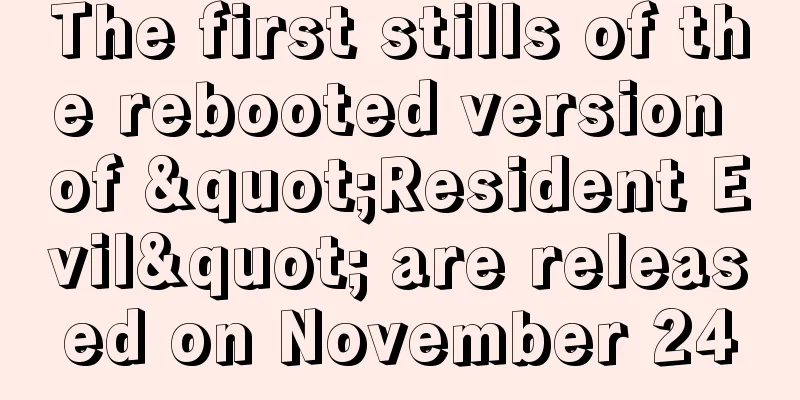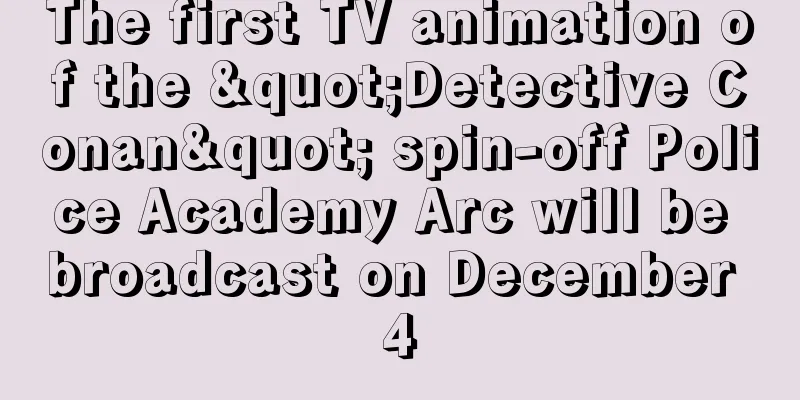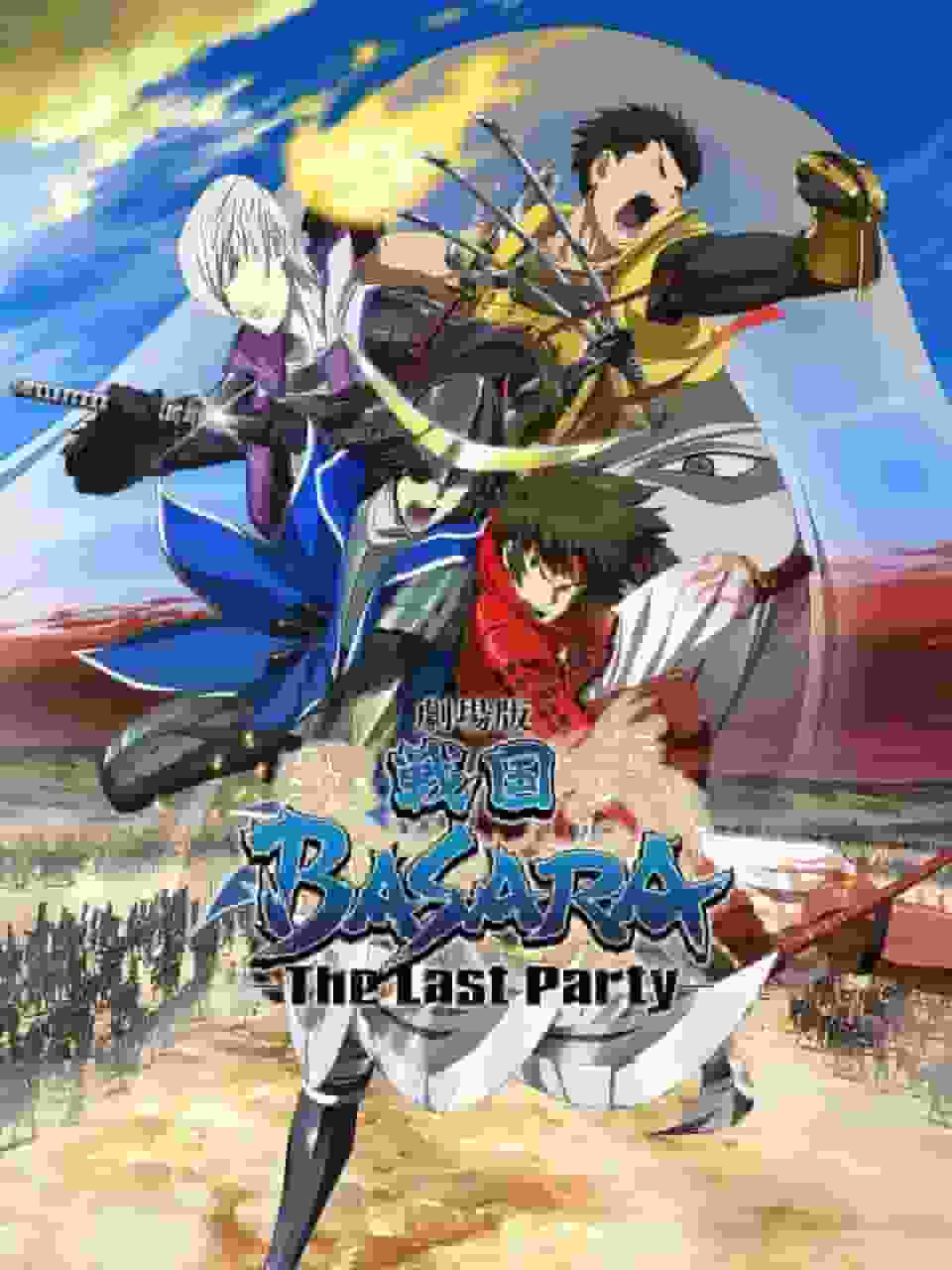"Flower Chief": A thorough analysis of the fascinating characters and the depth of the story

"Flower Chief": An animated film for adults depicting the daily life and dreams of an office worker■Overview of the workHana no Kacho (Flower Section Chief) is an adult animated film based on the original manga by Shunji Sonoyama and was released on November 28, 1981. Distributed by Shochiku and produced by Mainichi Broadcasting System and Tokyo Movie, it was released as a 59-minute short film. Its Eirin rating is 110617 and it is an animated adaptation of the original salaryman manga. The story follows the protagonist, Ayoji Masumaro, who has a grandiose name due to his distant ancestors being members of the nobility, as he works his way up to section chief but continues to work as an ordinary salaryman. ■ StoryAyaziji Masumaro has a grand name, as his distant ancestors were members of the nobility. However, he himself is just an ordinary office worker, living an ordinary life with his wife and son. One day, Masumaro is promoted to section chief, and begins to work hard, aiming for even greater promotion. For the sake of his wife and son, Masumaro continues to give his all to his work today. This is a heartwarming story that depicts the daily life and dreams of an office worker. ■Explanation"Flower Chief" is an anime adaptation of a salaryman manga based on the original work by Shunji Sonoyama. It was produced as an anime for adults that incorporates the worries of salarymen and sexy elements. Five years after it was broadcast on TV, episodes 4, 30, 7, 13, and 26 were re-edited and released as a companion piece to the anime film "Manzai Taikoki." The content of this work reflects the social situation and the life of salarymen at the time, and it resonated with many viewers. ■Cast・Ayaziji Asamaro: Kousei Tomita ・Yoko: Mariko Mukai ・Taro: Kazutaka Nishikawa ■ Main staff・Original story: Shunji Sonoyama・Screenplay: Tsunehisa Ito, Haruya Yamazaki・Director: Minoru Okazaki, Noboru Ishiguro・Rendition: Ittoku Tanahashi, Minoru Okazaki・Producer: Nobuo Inada・Assistant Producer: Shizuhiko Sengoku・Chief Animation Director: Takao Kozai・Art Director: Shichiro Kobayashi・Director of Photography: Katsuji Misawa・Sound Recording Director: Toshio Saito・Music: Hiroki Tamaki, Hiroshi Kamayatsu・Sound Recording: Tohokushinsha・Developing: Tokyo Development Laboratory・Production: Mainichi Broadcasting System, Tokyo Movie ■ Main Characters・Ayaziji Masumaro: A very ordinary office worker with a wife and one son. One day he is promoted to section chief, but this doesn't mean anything big changes in his life and he continues to work hard every day. ■ Appeal and evaluation of the work"Flower Chief" is a work that depicts the daily life and dreams of an office worker against the backdrop of Japanese society in the 1980s. The protagonist, Ayojiji Masumaro, has a grandiose name due to his distant ancestors being members of the nobility, but he himself works as an ordinary office worker. This contrast is one of the charms of the work and evokes sympathy from viewers. Furthermore, Masumaro's dedication to his work even as he is promoted to section chief reflects the reality of office workers at the time. This work was created as an anime for adults, incorporating the worries of an office worker and sexy elements. This allows the viewer to feel Masumaro's everyday life and work stress in a realistic way. It also touches the viewer's heart by depicting his love for his wife and son, and his dream of success. Five years after its TV broadcast, "Flower Chief" was re-edited and released as a companion piece to the anime film "Manzai Taikoki." This re-editing gave the story a more coherent storyline, allowing viewers to enjoy the work more. In addition, the content, which reflected the social situation and the life of an office worker at the time, resonated with many viewers and raised the film's reputation. ■ Background and influences"Flower Chief" is an anime adaptation of a manga about office workers based on the original work by Shunji Sonoyama. Shunji Sonoyama was a manga artist active from the 1970s to the 1980s, and produced many works depicting the lives and worries of office workers. "Flower Chief" was one of those works, and the realistic depiction of the original work was made into an anime, which allowed it to reach an even wider audience. This work was produced by Mainichi Broadcasting System and Tokyo Movie, and distributed by Shochiku. Mainichi Broadcasting System has been focusing on the production of television anime since the 1950s, and has produced many masterpieces. Tokyo Movie has also been involved in anime production since the 1960s, and has produced many hit works. Thanks to the cooperation of these two companies, "Flower Chief" was completed as a high-quality anime. "Flower Chief" was released on November 28, 1981, and its Eirin number is 110617. It was released as a 59-minute short film, and it consists of only one episode. The work reflected the social situation and life of the salaryman at the time, and resonated with many viewers. In addition, the re-editing made the story more consistent, allowing viewers to enjoy the work. ■Detailed information about the workHana no Kacho was released on November 28, 1981 and distributed by Shochiku. It was produced by Mainichi Broadcasting System and Tokyo Movie, and its Eirin number is 110617. It was screened as a 59-minute short film and consists of only one episode. It was based on a manga about office workers by Shunji Sonoyama, and the screenplay was written by Tsunehisa Ito and Haruya Yamazaki. It was directed by Minoru Okazaki and Noboru Ishiguro, and directed by Ittoku Tanahashi and Minoru Okazaki. It was produced by Nobuo Inada, assistant producer was Shizuhiko Sengoku, animation director was Takao Kosai, art director was Shichiro Kobayashi, director of photography was Katsuji Misawa, sound director was Toshio Saito, and music was by Hiroki Tamaki and Hiroshi Kamayatsu. Sound was provided by Tohokushinsha, and development was done by Tokyo Development Laboratory. ■ Cast detailsThe protagonist, Ayaziji Masumaro, was played by Tomita Kosei. Tomita Kosei was a voice actor active from the 1940s to the 1980s, and appeared in many works. Yoko was played by Mukai Mariko, and Taro was played by Nishikawa Kazutaka. Mukai Mariko was a voice actor active from the 1970s to the 1980s, and Nishikawa Kazutaka also appeared in many works. These cast members portrayed the characters in the work realistically, eliciting sympathy from viewers. ■ Staff detailsThe original author, Shunji Sonoyama, was a manga artist active in the 1970s and 1980s, and published many works depicting the lives and worries of office workers. The screenwriters, Tsunehisa Ito and Haruya Yamazaki, were screenwriters active in the 1970s and 1980s, and worked on many works. The directors, Minoru Okazaki and Noboru Ishiguro, were anime directors active in the 1970s and 1980s, and worked on many hit works. The directors, Ittoku Tanahashi and Minoru Okazaki, also worked on many works. The producer, Nobuo Inada, was a producer active in the 1970s and 1980s, and assistant producer Shizuhiko Sengoku also worked on many works. The animation director, Takao Kozai, was an animator active in the 1970s and 1980s, and art director, Shichiro Kobayashi, also worked on many works. Cinematographer Katsuji Misawa was a director active from the 1970s to the 1980s, and sound director Toshio Saito was also involved in many productions. Music composer Hiroki Tamaki and Hiroshi Kamayatsu were musicians active from the 1970s to the 1980s, and provided music for many productions. Tohokushinsha, the sound company, was active from the 1970s to the 1980s, and Tokyo Development Laboratory, which developed the film, was also involved in many productions. Thanks to these staff members, "Flower Chief" was completed as a high-quality anime. ■ Evaluation and influence of the work"Flower Chief" is a work that depicts the daily life and dreams of an office worker against the backdrop of Japanese society in the 1980s. The protagonist, Ayojiji Masumaro, has a grandiose name due to his distant ancestors being members of the nobility, but he himself works as an ordinary office worker. This contrast is one of the charms of the work and evokes sympathy from viewers. Furthermore, Masumaro's dedication to his work even as he is promoted to section chief reflects the reality of office workers at the time. This work was created as an anime for adults, incorporating the worries of an office worker and sexy elements. This allows the viewer to feel Masumaro's everyday life and work stress in a realistic way. It also touches the viewer's heart by depicting his love for his wife and son, and his dream of success. Five years after its TV broadcast, "Flower Chief" was re-edited and released as a companion piece to the anime film "Manzai Taikoki." This re-editing gave the story a more coherent storyline, allowing viewers to enjoy the work more. In addition, the content, which reflected the social situation and the life of an office worker at the time, resonated with many viewers and raised the film's reputation. ■Recommending a work"Flower Chief" is a work that depicts the daily life and dreams of an office worker against the backdrop of Japanese society in the 1980s. The protagonist, Ayojiji Masumaro, has a grandiose name due to his distant ancestors being members of the nobility, but he himself works as an ordinary office worker. This contrast is one of the charms of the work and evokes sympathy from viewers. Furthermore, Masumaro's dedication to his work even as he is promoted to section chief reflects the reality of office workers at the time. This work was created as an anime for adults, incorporating the worries of an office worker and sexy elements. This allows the viewer to feel Masumaro's everyday life and work stress in a realistic way. It also touches the viewer's heart by depicting his love for his wife and son, and his dream of success. Five years after its TV broadcast, "Flower Chief" was re-edited and released as a companion piece to the anime film "Manzai Taikoki." This re-editing gave the story a more coherent storyline, allowing viewers to enjoy the work more. In addition, the content, which reflected the social situation and the life of an office worker at the time, resonated with many viewers and raised the film's reputation. This work is a heartwarming story that depicts the daily life and dreams of an office worker, and has resonated with many viewers. It is especially recommended for those who want to enjoy a work set in Japanese society in the 1980s, or for those looking for a work that depicts the life and worries of an office worker. It is also recommended for those who want to enjoy a work based on the original work by Shunji Sonoyama. Hana no Kacho was released on November 28, 1981 and distributed by Shochiku. It was produced by Mainichi Broadcasting System and Tokyo Movie, and its Eirin number is 110617. It was screened as a 59-minute short film and consists of only one episode. It was based on a manga about office workers by Shunji Sonoyama, and the screenplay was written by Tsunehisa Ito and Haruya Yamazaki. It was directed by Minoru Okazaki and Noboru Ishiguro, and directed by Ittoku Tanahashi and Minoru Okazaki. It was produced by Nobuo Inada, assistant producer was Shizuhiko Sengoku, animation director was Takao Kosai, art director was Shichiro Kobayashi, director of photography was Katsuji Misawa, sound director was Toshio Saito, and music was by Hiroki Tamaki and Hiroshi Kamayatsu. Sound was provided by Tohokushinsha, and development was done by Tokyo Development Laboratory. The protagonist, Ayaziji Masumaro, was played by Tomita Kosei. Tomita Kosei was a voice actor active from the 1940s to the 1980s, and appeared in many works. Yoko was played by Mukai Mariko, and Taro was played by Nishikawa Kazutaka. Mukai Mariko was a voice actor active from the 1970s to the 1980s, and Nishikawa Kazutaka also appeared in many works. These cast members portrayed the characters in the work realistically, eliciting sympathy from viewers. The original author, Shunji Sonoyama, was a manga artist active in the 1970s and 1980s, and published many works depicting the lives and worries of office workers. The screenwriters, Tsunehisa Ito and Haruya Yamazaki, were screenwriters active in the 1970s and 1980s, and worked on many works. The directors, Minoru Okazaki and Noboru Ishiguro, were anime directors active in the 1970s and 1980s, and worked on many hit works. The directors, Ittoku Tanahashi and Minoru Okazaki, also worked on many works. The producer, Nobuo Inada, was a producer active in the 1970s and 1980s, and assistant producer Shizuhiko Sengoku also worked on many works. The animation director, Takao Kozai, was an animator active in the 1970s and 1980s, and art director, Shichiro Kobayashi, also worked on many works. Cinematographer Katsuji Misawa was a director active from the 1970s to the 1980s, and sound director Toshio Saito was also involved in many productions. Music composer Hiroki Tamaki and Hiroshi Kamayatsu were musicians active from the 1970s to the 1980s, and provided music for many productions. Tohokushinsha, the sound company, was active from the 1970s to the 1980s, and Tokyo Development Laboratory, which developed the film, was also involved in many productions. Thanks to these staff members, "Flower Chief" was completed as a high-quality anime. "Flower Chief" is a work that depicts the daily life and dreams of an office worker against the backdrop of Japanese society in the 1980s. The protagonist, Ayojiji Masumaro, has a grandiose name due to his distant ancestors being members of the nobility, but he himself works as an ordinary office worker. This contrast is one of the charms of the work and evokes sympathy from viewers. Furthermore, Masumaro's dedication to his work even as he is promoted to section chief reflects the reality of office workers at the time. This work was created as an anime for adults, incorporating the worries of an office worker and sexy elements. This allows the viewer to feel Masumaro's everyday life and work stress in a realistic way. It also touches the viewer's heart by depicting his love for his wife and son, and his dream of success. Five years after its TV broadcast, "Flower Chief" was re-edited and released as a companion piece to the anime film "Manzai Taikoki." This re-editing gave the story a more coherent storyline, allowing viewers to enjoy the work more. In addition, the content, which reflected the social situation and the life of an office worker at the time, resonated with many viewers and raised the film's reputation. This work is a heartwarming story that depicts the daily life and dreams of an office worker, and has resonated with many viewers. It is especially recommended for those who want to enjoy a work set in Japanese society in the 1980s, or for those looking for a work that depicts the life and worries of an office worker. It is also recommended for those who want to enjoy a work based on the original work by Shunji Sonoyama. |
<<: Manzai Taikoki: A thorough evaluation of the fusion of comedy and history
>>: Fang of the Sun Dougram: A review that looks into the appeal of the mecha design and story
Recommend
The animated film "Hello World" is scheduled to be released in China on June 11th and the Chinese poster is announced
Today (April 29), the movie "Hello World&quo...
A lot of new stills from the movie "God of Fiction" Kanna Hashimoto's wet body photos after the rain are included
The movie "God of Novel", adapted from ...
The new TV animation of "Digimon Adventure" has been discontinued and "GeGeGeGe no Kitaro" will be rebroadcasted
Due to the continuous spread of the new crown epi...
The first official PV of the animation "The Villainous Lady Should Raise a Demon King" will be broadcast in October
"As a Villainous Lady, You Should Raise a De...
CLAMP's "April 1st Paranormal Activity Book" movie will be released on April 29
Based on the classic supernatural fantasy manga &...
The 2022 new "Ultraman Deka" preview was exposed and it looks like Dyna
The "Ultraman Triga" theatrical film &q...
Detailed review and evaluation of the manga "Introduction to the Japanese Economy"
"Manga Introduction to the Japanese Economy&...
New stills of the Sino-US co-produced animation masterpiece "White Snake: Origin" are classical, beautiful and dreamy
Today, Light Chaser Animation released new stills...
The appeal and evaluation of Haou Taikei Ryu Knight Adieu Legend II: The deeper and more moving sequel
Haou Taikei Ryu Knight Adieu Legend II - Haou Tai...
Disney's live-action version of "Mulan" will start filming in 2018 and will be shot in China
According to foreign media reports, the live-acti...
The Story of Footwear and Umbrellas: Reevaluating the Emotion of Everyone's Song
The Story of Footwear and Umbrellas - Hakimonotok...
The appeal and reviews of "Dochamon Junior Season 2": A thorough explanation of the evolution and excitement of the sequel
The appeal and reviews of "Dochamon Junior S...
Major foreign media reported that the box office growth rate of "Detective Chinatown 3" is like a monster
Today, "Detective Chinatown 3" broke th...
Revisions Review: The Story and Characters Exceed Expectations
"Revisions": A warning from the future ...
Darth Vader actor: I would love to play the Dark Lord again in future Star Wars movies
Hayden Christensen, the famous "Star Wars&qu...









